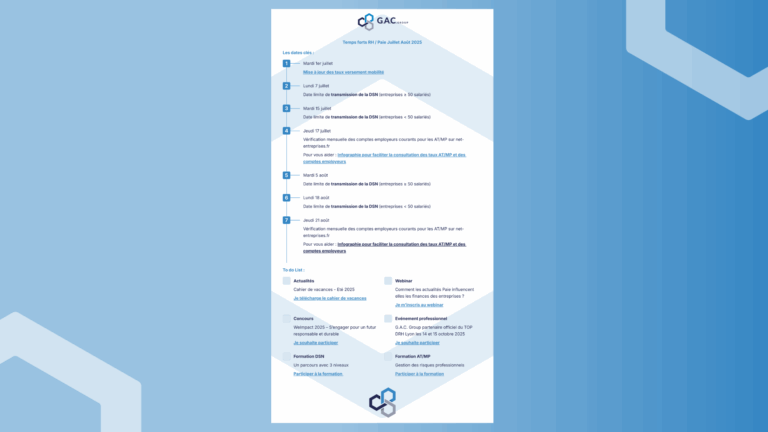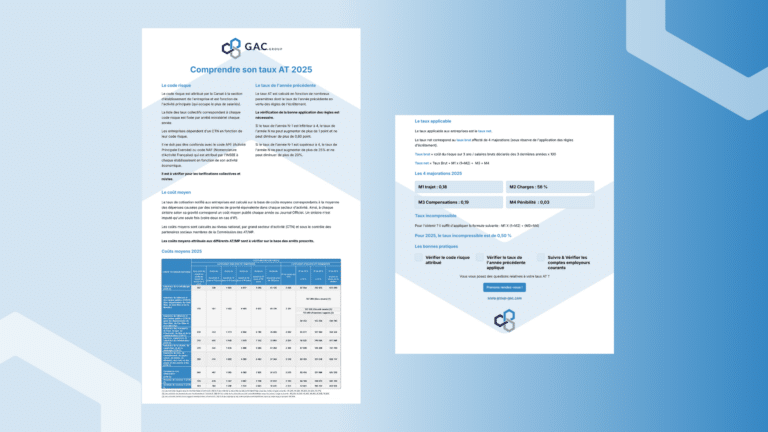The arduousness is characterized by the exposure of the worker to one or more occupational risk factors linked to marked physical constraints, an aggressive physical environment or to certain work rhythms. 10 risk factors are provided for by the Labor Code:
Marked physical constraints
- Manual handling of loads, that is to say any operation of transport or support of a load including lifting, laying, pushing, pulling, carrying or moving, which requires the physical effort of one or more workers
- Awkward postures defined as forced positions of the joints
- Mechanical vibrations transmitted to the hands and arms and those transmitted to the whole body
Aggressive physical environment
- Hazardous chemical agents, including dust and fumes
- Activities carried out in hyperbaric environment (high pressure)
- Extreme temperatures (without taking into account the outside temperatures)
- Noise
Rhythms of work
- Night work under certain conditions
- Work in successive alternating teams (shift work in 3 x 8, 2 x 12…)
- Repetitive work characterized by the performance of work involving the execution of repeated movements, stressing all or part of the upper limb, at a high frequency and under constrained pace
Employees concerned
The employees who are the subject of a declaration are identified by evaluating the exposure of each worker with regard to his usual working conditions, assessed, on average, over the year.
To establish its declaration, the employer can however use the positions, trades or work situations defined by an extended collective sectoral agreement or, failing that, by an approved professional sector reference system. When they exist, these employer assistance documents determine workers' exposure to hardship factors, taking into account collective and individual protection measures (article L. 4163-2 of the Labor Code)
The professional prevention account allows the employee to accumulate points for:
- Go on training to access positions less exposed to hardship
- Benefit from part-time work without loss of salary
- Retire earlier
Business obligation
Decree No. 2017-1769 of December 27, 2017 relating to the professional prevention account specifies the obligation for companies with at least 50 employees to initiate negotiations on a hardship prevention plan or, failing that, to establish an action plan.
This obligation arises in two situations :
- When at least 25 % of employees are exposed to at least one of the 6 risk factors within the framework of the professional prevention account (C2P).
- From January 1, 2019, when the claims index is greater than 0.25.
The 6 risk factors affected by the hardship system
- Activities carried out in hyperbaric environment
- Extreme temperatures
- Noise
- Night work
- Work in successive alternating teams
- Repetitive work
Calculation of the loss ratio
This loss index is equal to the ratio, for the last 3 years knownbetween the number of accidents at work and occupational illnesses charged to the employer's account, and the company's workforce (excluding commuting accidents).
Example: a company with 120 employees had 5 work accidents in 2015, 8 in 2016 and 6 in 2017, and no occupational disease over the past 3 years.
Its claims index is therefore: (5 + 8 + 6) / 120 = 0.158 <0.25. Assuming that it has less than 25 % of its employees exposed to the 6 factors of C2P, it will not be subject to the obligation to negotiate.
The company agreement
The company or group agreement or, failing that, the action plan, or the extended branch agreement deals with at least two of the following topics:
a) Reduction of multiple exposures to risk factors;
b) Adaptation and layout of the workstation;
c) Reduction of exposure to occupational risk factors.
But also, at least two of the following themes:
a) Improvement of working conditions, particularly at the organizational level;
b) Development of skills and qualifications;
c) Arrangement of the end of the career;
d) Keeping employees exposed to risk factors active.
In the event of no agreement or failure of the action plan carried out, the director of CARSAT may order a penalty equivalent to 1 % of the payroll paid to the employees concerned.








